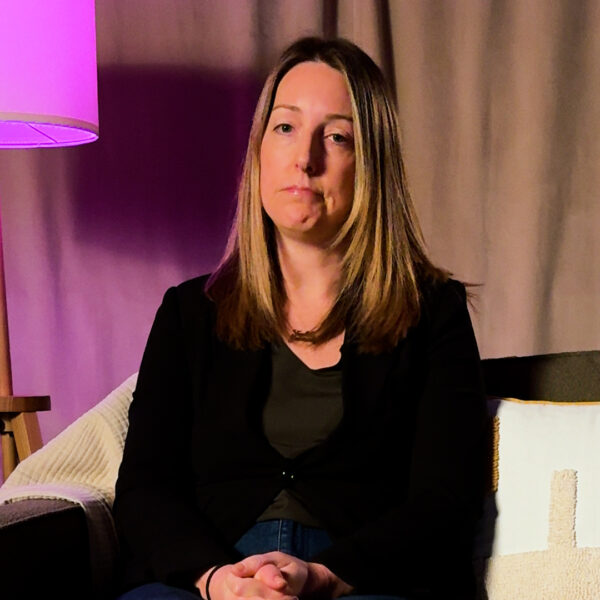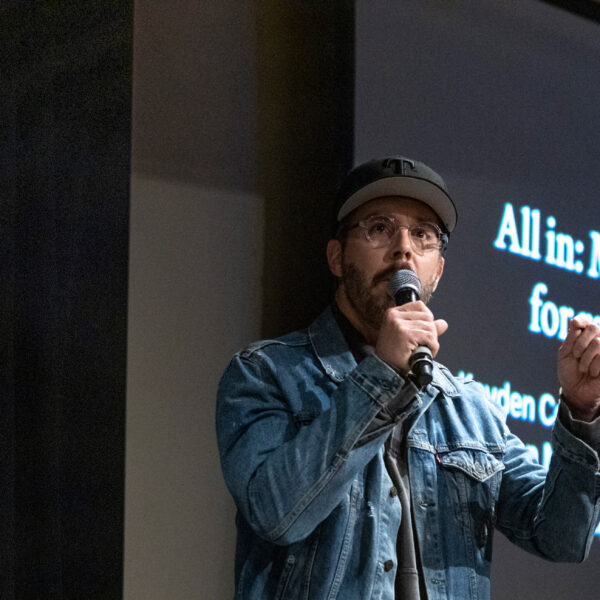My Abortion Story Went Viral. Here’s What Happened Next.
Synopsis
In an exclusive essay for ELLE.com, Arizona state Sen. Eva Burch recounts her speech on the floor of the Arizona Senate.
Update: In a devastating decision, Arizona’s Supreme Court ruled on Tuesday that the state must adhere to an archaic 123-year-old ban on abortion, except in cases when “necessary to save” the life of a pregnant person. This law, which can actually be traced back even earlier to 1864, may also allow for “additional criminal and regulatory sanctions” to abortions performed after 15 weeks of pregnancy. Arizona now has one of the strictest abortion bans in the nation, which President Joe Biden blasted for failing to “protect women even when their health is at risk or in tragic cases of rape or incest.” The White House announced that Vice President Kamala Harris will be visiting Tucson this week “to continue her leadership in the fight for reproductive freedoms.” In light of the news, ELLE is re-sharing this powerful essay from Arizona state Sen. Eva Burch.
Last week, Arizona state Sen. Eva Burch did the unthinkable: She announced her decision to get an abortion on the floor of the Arizona Senate. In her speech, which quickly went viral, Burch talked about the importance of access to abortion care in America and why she, as a politician, felt compelled to share her story in such a public manner. Now, in an exclusive essay for ELLE, Burch writes about that emotional moment on the Senate floor—and why she wants to “change the narrative about what abortion care looks like.”
Two years ago I scheduled my first abortion. This was a pregnancy my husband and I had been dreaming of and planning for, but it wasn’t progressing. Then, as if that news wasn’t heartbreaking enough, I began to miscarry. The bleeding was heavier than expected, and we called an ambulance.
Shortly after we arrived at the hospital, my miscarriage stalled, and the bleeding stopped. Doctors could still see the embryo on the ultrasound, but there was no longer a heartbeat. I was told that I couldn’t have an abortion in the hospital, because my life wasn’t in danger. Instead, doctors advised me to wait and go to my scheduled abortion appointment the next day. They said their hands were tied, and it was all they could do. Two weeks later, the Supreme Court overturned Roe v. Wade.
Fast forward to this year, and I found out that I was pregnant once again. My mother had just passed away in my home where I was caring for her, and it was hard not to believe this was a sign that this pregnancy might be different. But after several ultrasounds, it became clear that my pregnancy was, once again, not progressing as it should. I made the decision to have an abortion.
For far too long, political extremists have worked to rewrite the image of the abortion patient—working overtime to make us believe that the only people who seek out abortion care are promiscuous, selfish, irresponsible, or even lazy. This narrative is pushed to create stigma and justify bad laws.
I’m a 44-year-old happily married mother of two. I’m a nurse practitioner and state senator in Arizona. I don’t fit that narrative, and I refused to let this moment pass me by without setting the record straight. Last week, I said my piece before the state. I waited until legislative business was done for the day, then hit my request-to-speak button to be recognized. I rose to tell my abortion story surrounded by my Democratic colleagues. By mid-week, I was fortunate enough to undergo my planned abortion with no complications. I chose to have an IUD placed at the same time.
Sometimes it feels like a bad dream; my first abortion was days before the Supreme Court stripped away the reproductive rights of millions of Americans. Here I am, standing in that position once again, as the Supreme Court hears oral arguments on Alliance for Hippocratic Medicine v. U.S. Food and Drug Administration (FDA), which will decide how patients can access mifepristone, one of two drugs (along with misoprostol) used in medication abortions.
My own experience has been marred by disinformation and obstacles created by out-of-touch elected officials. If SCOTUS once again chooses to side with extremists, it will make medication abortion much harder to get. And we know these attacks won’t stop there. While SCOTUS decides just how much bodily autonomy we are entitled to, the Arizona Supreme Court is weighing the decision to either uphold our state’s current 15-week abortion ban or reinstate our no-exceptions total ban on abortion that was enacted in 1864. Either way, Arizonans lose. And similar scenarios are playing out in states all across the country.
I can’t find a way to say this with more clarity: Our rights are on the chopping block, and they won’t be protected unless you show up to vote in November. As a legislator, I am well aware of how hostile Republicans can be to our rights and freedoms. I work with them every day. Some Arizona Republicans are so far out of touch, that they refused to even consider or discuss the Right to Contraception Act that was introduced by my Democratic colleagues. So we know exactly what they are coming for next. It will never be enough.
I share my story in the hopes that we can change the narrative about what abortion care looks like, who the abortion patient is, and how legislation impacts real people seeking abortion care. The overwhelming amount of love that I have received and the willingness of strangers to tell me their own stories gives me hope that November will be a time of celebration, not heartbreak. We have the power to write our own stories. Let’s do it together. Get registered to vote. Learn about the candidates on your ballot. Bring friends to the polls.
Abortion is on the ballot, and we must elect politicians up and down the ticket who will remain committed to restoring our fundamental freedoms—and who protect us from those who seek to take away our rights, our stories, and our futures.

Indiana OB-GYN: Patients aren’t getting the care they need because of abortion bans

His wife almost died because of Texas’ abortion ban. He hopes more men talk about the harms of them.
